4️⃣ChatGPT Prompt Engineering Principles
With ChatGPT taking Content Writing and everything around it by storm, it is increasingly becoming important to also understand how to put it to best use. This is where Prompt Engineering comes into the picture.
Prompt Engineering is the process of creating, clear, concise and easily understandable prompts that help the machine or the AI model being used to generate or predict anything work to its best capacity.
As easy as it sounds, prompt Engineering is not just putting your task into words and pushing it into the ChatGPT interface. It requires careful framing. It starts with deciding the factors that are absolutely necessary and should be included in the prompt and then designing and structuring the prompt based on the primary goals and then the ways it should be reached. This can be a little tiresome and the whole process might not give as effective results if you start as a beginner. Hence, it is important to understand the various key factors that need to be considered and how they can be used to structure a prompt. Many people have started understanding and applying some special tricks to generate the best content with the most useful information quickly from ChatGPT.
We have summarized some of these tricks and explained them in easily understandable and conveniently applicable principles. In this article, we discuss 5 ChatGpt Prompt Engineering Principles that will help you to write the best prompts and complete all your content tasks with the help of ChatGPT more effectively.
ChatGPT Prompt Engineering Principles
As mentioned above, asking an AI model to work something out for you can be quite tricky and hence we need to make sure that the prompts using which we ask the model to do our task are as precise and to the point as possible. Along with that, we need to also explain to it the expectations, context as well as other situational factors it needs to consider before generating our content. So following are the 5 Top ChatGPT Prompt Engineering Principles that you should always remember:
1. Clarity
The first and primary principle in the universe of Prompt Engineering is CLARITY. The Principle of clarity consists of the 3 Cs:
Clear Instructions
Clear Requirements
Clear Goals
The three Cs pretty much sum up the principle. In prompt engineering, there is no space for ambiguity. It is essential to provide clear instructions and guidance to the language model to ensure it understands the user’s intent accurately along with also providing what it is exactly that you seek for in the answer particularly. Ambiguity in prompts can lead to misinterpretations and produce suboptimal responses.
Clear prompts help the model in understanding the goal of the question, as well as the final result or expectation from it. Now let us take a look at an example to understand how a clear prompt can be used to generate a clear prompt.
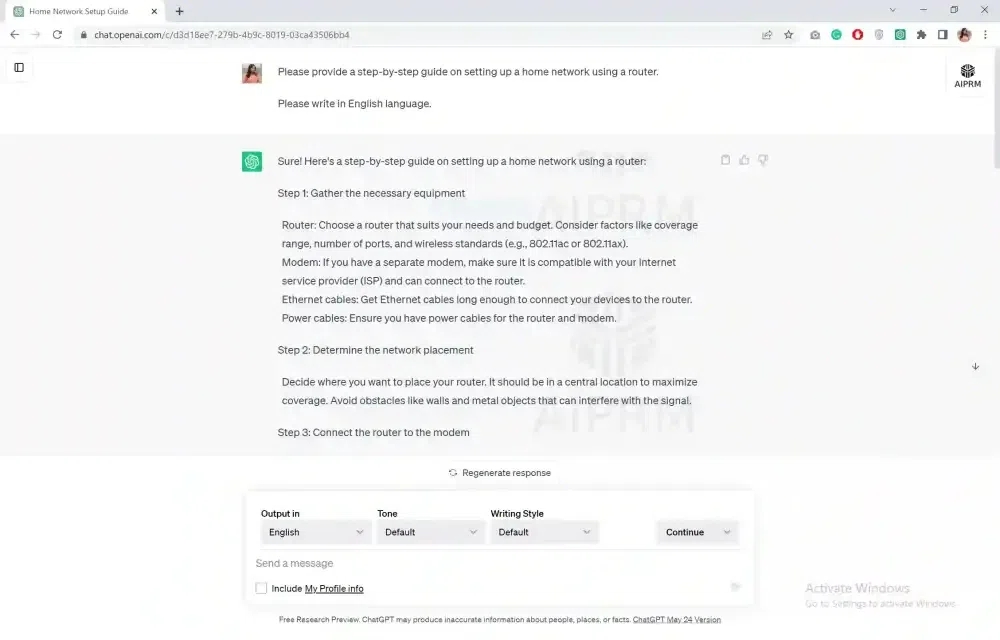
The above-shown example depicts how the prompt provides everything clearly using the principle correctly. There is no space for ambiguity or assumptions and the user defines how and what it is exactly that they are expecting.
2. Specificity/ Conciseness
The second principle stresses the specificity and conciseness in a prompt and how that can help a model in understanding straightforward the information the user is requesting for. We often confuse ourselves that telling too many facts and requirements can help us in getting a more relevant response sooner. Hence, we keep explaining the context in too much detail including a lot of unnecessary factors only confusing the model. This can result in vague responses or answers that focus too much on factors that were not actually so important.
Below is a clear illustration of how one can frame a prompt with all the necessary requirements in a concise and specific manner.
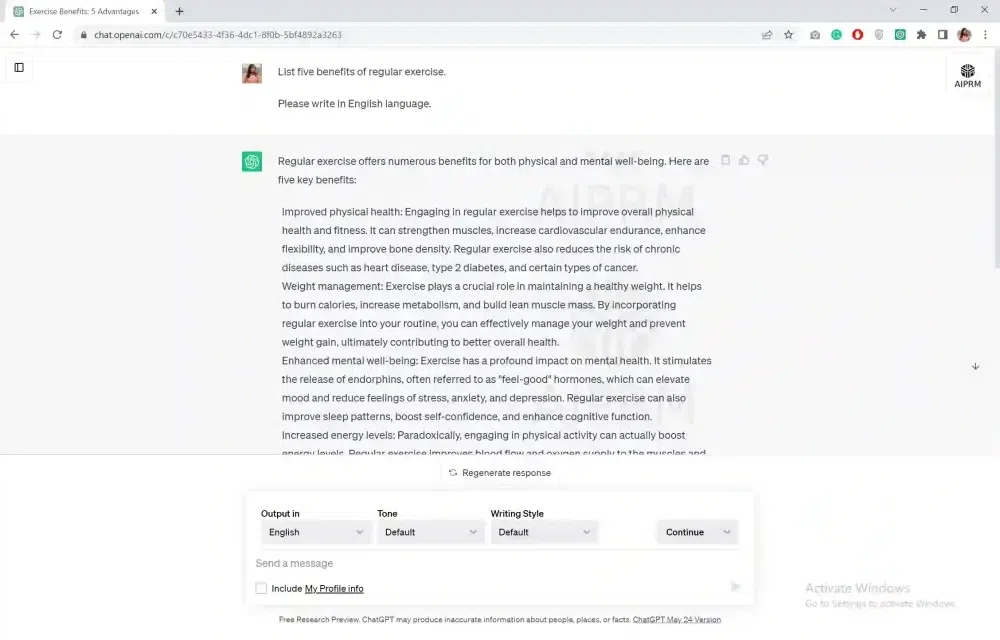
The above prompt focuses more on the factors that are really important. The word 5 emphasizes that we need the most important 5 reasons only. Followed by that is the exact point that the model should be talking about.
3. Providing/Elaborating Context
As much as the topic, the clarity, and the specificity of a prompt are important, the context is equally as important. The context may not be visibility affecting the output, but, understanding it more deeply, affects the way in which the content is written and the need for it to begin with. Context information helps the language model to generate responses that have a more meaningful thought to it. It could simply be a letter, but it makes a huge difference if it is mentioned to be an informal letter or a formal letter, this tiny context word means the world in the situation.
Following is an example of how context can help in getting a better response.
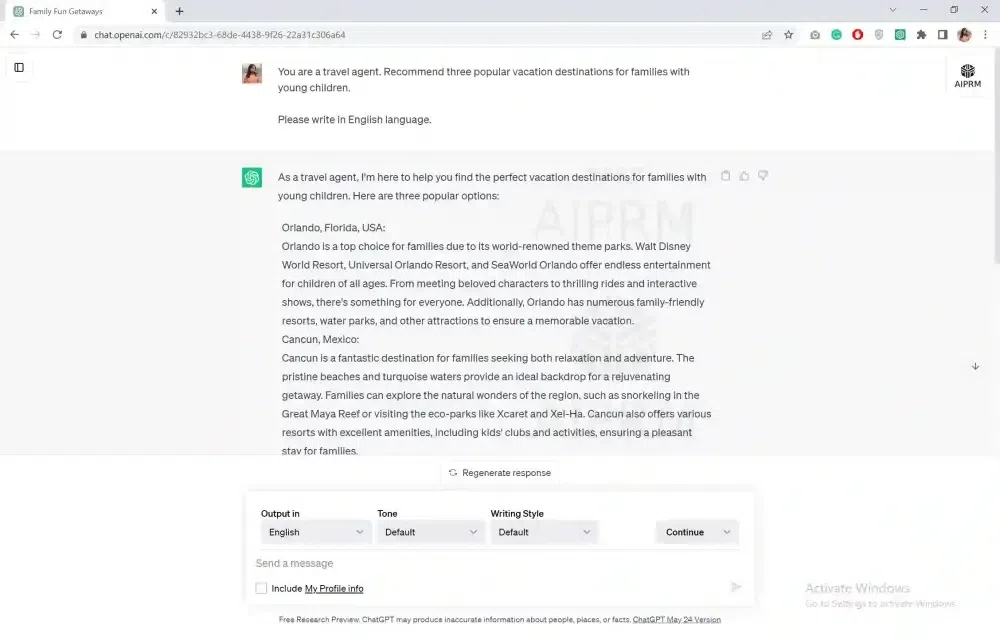
In the above example, the context of the prompt acting as a Travel Agent will help the prompt in understanding the audience and the kind of answer expected out of the situation.
You can also check our Roadmap to Prompt Engineering : Roadmap of Becoming a Prompt Engineer
4. “I want you to be”
“I want you to be” is essentially a phrase that is used in front of a prompt to make it more meaningful for the model. It helps the model understand the context in a better way. Precise prompts are better and hence the phrase helps in explaining the context to the model a little better with more clarity and specificity.
It asks the model to assume a position or a role or an occupation. This small designation or role assigned with a few words helps in defining a vast multitude of factors precisely. Some of the factors are:
Style
Tone
Formality Level
Behavior
Maturity
Following is an example of how the phrase can be used:
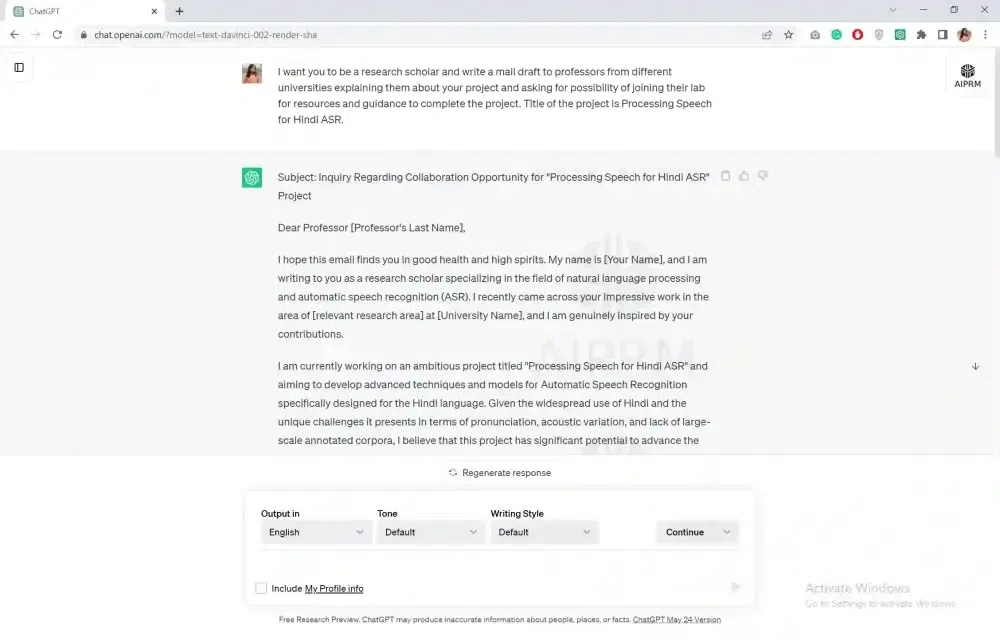
The example clearly uses the phrase right in the beginning making it clear that the task needs to be done in a particular way.
5. Consistency/ Continous Learning
Maintaining consistency and enabling continuous learning are vital aspects of prompt engineering. Consistent prompts help establish a stable and reliable conversational experience. By providing consistent instructions, we can ensure that the model produces coherent responses that align with previous interactions. Additionally, continuous learning involves refining prompts based on user feedback and incorporating improvements into the prompt engineering process. This iterative approach allows for ongoing enhancement of the model’s performance over time. Consistent prompts establish a stable conversation flow, and continuous learning allows prompt refinement based on user feedback.
Refer to the following example to understand the principle and its application better:
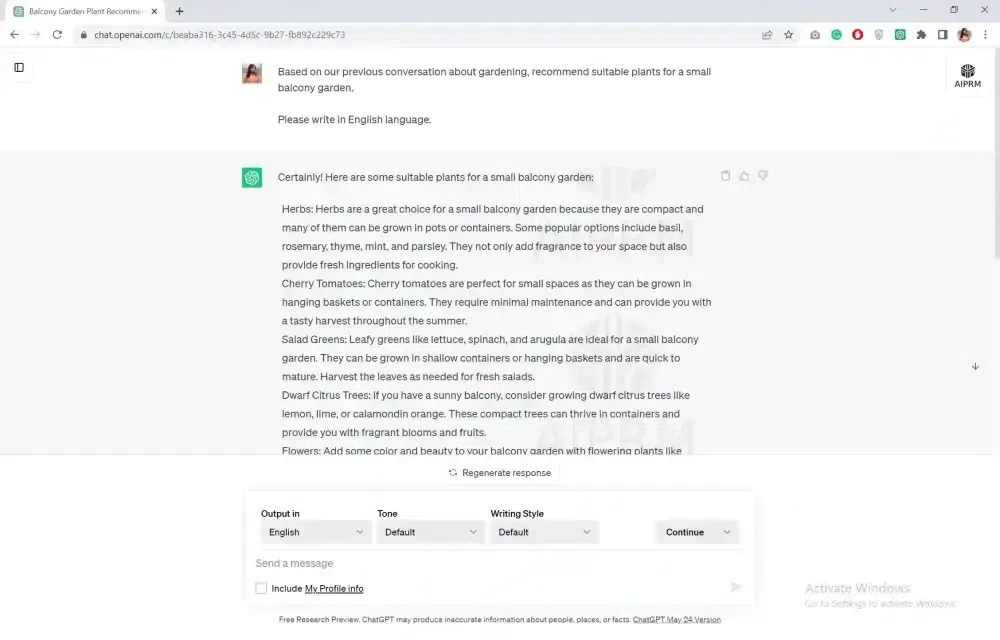
The above example shows how the continuous conversation with ChatGPT can help in using the previous information passed down or generated in further extracting the right answers from it.
Conclusion
To sum up, each one of the principles stated above helps in optimizing the usage of ChatGPT and generating the right kind of solution or content as per the situation. Some help in organizing the goals and requirements better for the prompt to easily make sense of it, while others make it easier to set the situation and the type of content that needs to be written for it. Overall, as difficult as it might seem in the beginning to apply these Best ChatGpt Prompt Engineering Principles all at once, it is the only practice that makes the work easier and better. If applied correctly, these principles can help in generating the right content very easily without much of a hassle.
As the field of prompt engineering continues to advance, it is crucial to explore new techniques and methodologies. Researchers and developers are constantly refining these principles to enhance the capabilities of language models, making them more valuable in various applications, such as customer support, virtual assistants, content generation, and more.
FAQs on Prompt Engineering Principles
Last updated